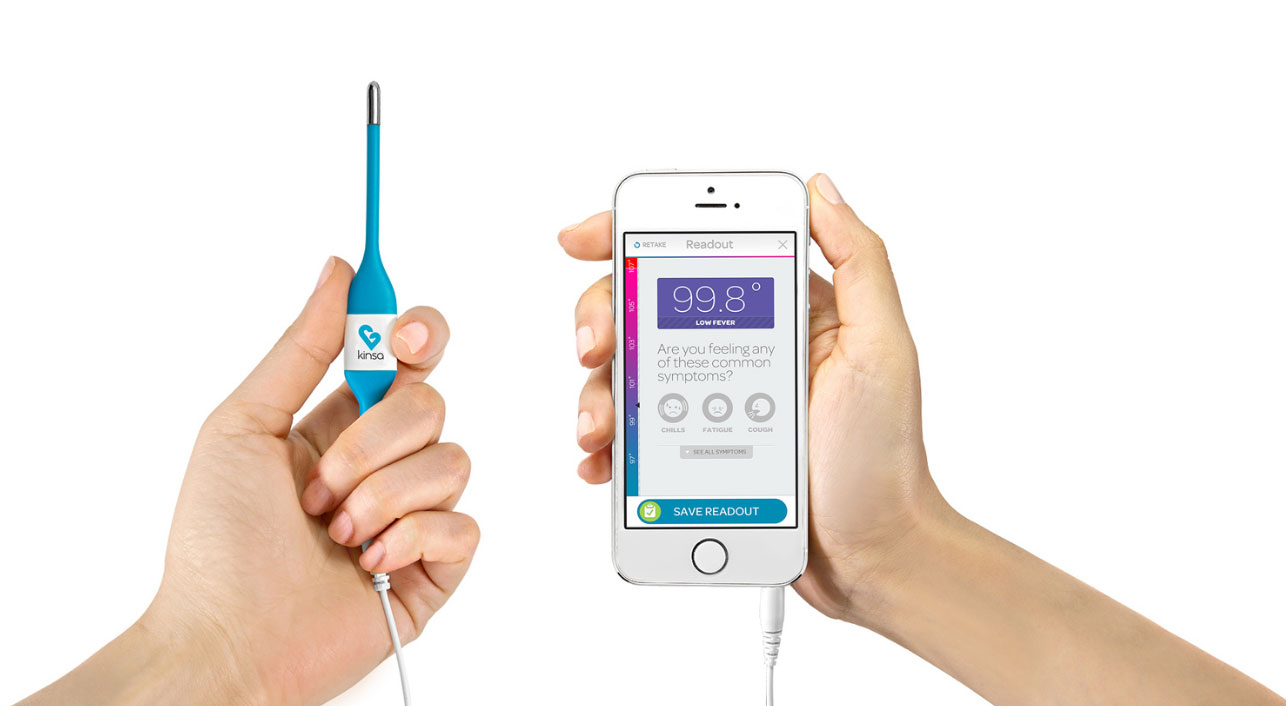Smart Thermometers Could Help Contain Epidemics, Experts Say

Smart thermometers that upload people's temperature readings to the cloud could help researchers spot disease outbreaks early, some experts say.
The devices not only let users see their temperature on their phones but also have the potential to alert researchers to unusual spikes in fevers in certain areas, said Dr. Dimitri Christakis, a professor at Seattle Children's Hospital Research Institute.
However, in order for researchers to track outbreaks with smart thermometers, there would need to be enough people using the technology, Christakis said. "If it's used extensively, it has least at the potential to be a very important tool in predicting and tracking epidemics," Christakis said. [7 Devastating Infectious Diseases]
In a recent proof-of-concept study, Christakis analyzed data from U.S. users of the Kinsa Smart Thermometer, a smart thermometer that is approved by the U.S. Food and Drug Administration.
As of September 2014, nearly 3,000 Kinsa thermometers in the United States had been used at least once, and the average thermometer had been used about seven times.
The researchers found that the use of this thermometer spiked in Dallas after the city had its first Ebola case in late September 2014. In the month before the Ebola case, there were 5.6 temperature readings per user, but two months later, in November 2014, there were 10.6 readings per user.
By using the Kinsa thermometer, users agree to have their data anonymously uploaded to the cloud, where researchers could access it. Users can also opt whether to let the smartphone application access their location.
Sign up for the Live Science daily newsletter now
Get the world’s most fascinating discoveries delivered straight to your inbox.
The spike in Dallas shows that people really do use these thermometers more when they are concerned about a particular disease, Christakis said.
In the nation as a whole, there was also an increase in the percentage of users who had a fever during the study period — from about 4 percent in March 2014 to nearly 12 percent in October 2014. However, this rise could be due to more people using the technology, or could simply reflect the start of cold/flu season, Christakis said.
To understand whether an epidemic were occurring, researchers would need to collect information about how many people typically have fevers in an area at a given time.
Christakis noted that some researchers have been trying to use social media to track and predict outbreaks, based on whether users and their friends post about experiencing flu or other symptoms. However, this information is "relatively crude compared to objectively collected data," such as temperature readings, Christakis said.
Currently, no one is using data from smart thermometers to track infectious-disease outbreaks, but Christakis hopes his study will prompt researchers to test the technology for this purpose.
The study was published online today (Sept. 8) in the journal JAMA Pediatrics. Christakis does not receive funds from Kinsa.
Follow Rachael Rettner @RachaelRettner. Follow Live Science @livescience, Facebook & Google+. Original article on Live Science.

Rachael is a Live Science contributor, and was a former channel editor and senior writer for Live Science between 2010 and 2022. She has a master's degree in journalism from New York University's Science, Health and Environmental Reporting Program. She also holds a B.S. in molecular biology and an M.S. in biology from the University of California, San Diego. Her work has appeared in Scienceline, The Washington Post and Scientific American.
La Crosse virus disease: The rare mosquito-borne illness that causes deadly brain inflammation
Parasitic worm raises risk of cervical cancer, study finds










